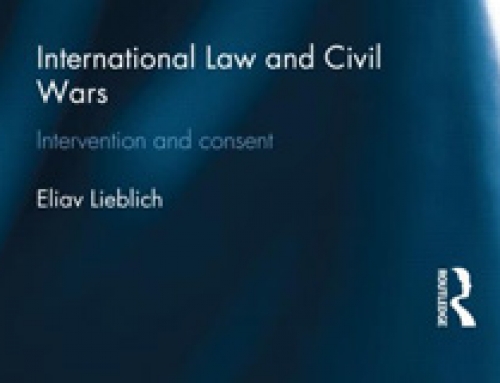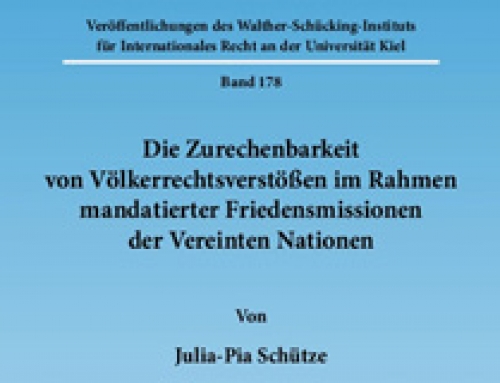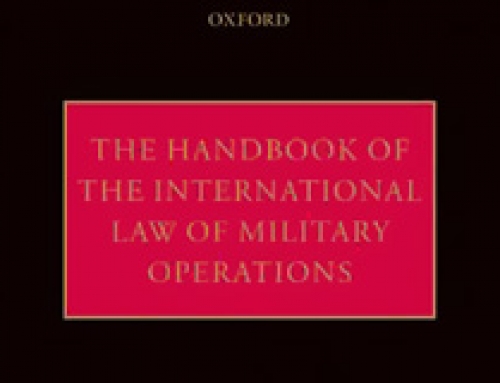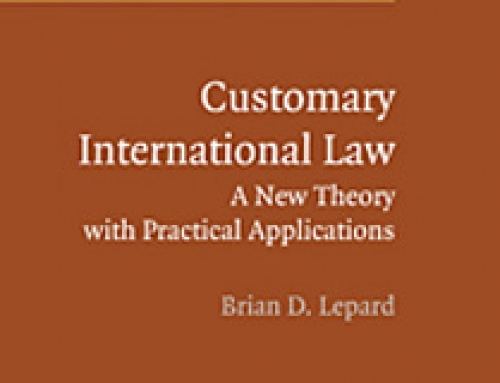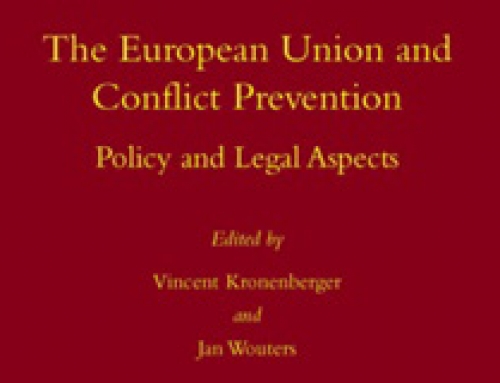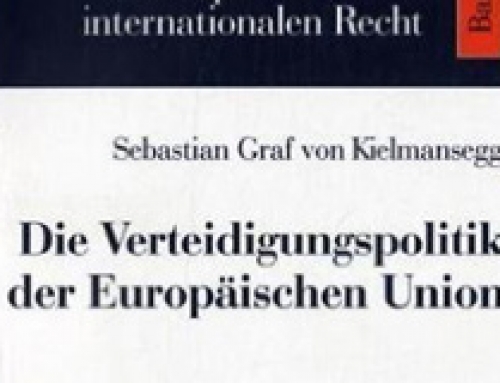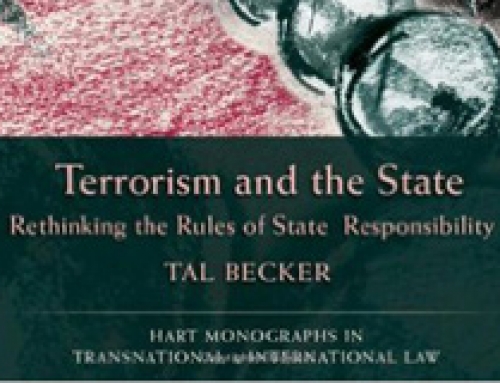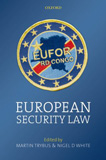
Martin Trybus and Nigel D. White (Eds.), European Security Law. Oxford: Oxford University Press, 2007. 400 pages. ISBN 978-0-19-921862-2. GBP 60.
The purpose of this volume is to provide an analysis of the EU’s evolving legal framework and competences in security and defence matters following the launch of the European Security and Defence Policy (ESDP). Although the EU has pursued a common foreign and security policy since its creation, it has only relatively recently acquired an operational capability to conduct crisis management operations in third countries in pursuit of its foreign policy objectives. Over the past few years, the EU’s Member States and third parties have made available significant military and civilian resources to the Union in the context of the ESDP, and several dedicated organs have been created within the EU’s institutional structure to enable it to deploy those resources. Since 2003, the EU has launched nineteen military and civilian crisis management missions, the most recent one being the rule of law mission in Kosovo.
As the editors of European Security Law point out in their introduction, the emergence of the EU as a regional security organization poses a number of legal problems both within the internal legal order of the Union and in public international law. The development of an intergovernmental security and defence policy raises questions about its interaction with other policy areas falling within the external relations system of the European Community. The ESDP also raises questions about its compatibility with NATO, the continued neutral status of certain EU Member States, and the role of the EU within the collective security system of the UN more generally. The book addresses these and other questions in three parts. The first part examines the historical origins and the possible future development of European security and defence policy. The second part deals with current issues of the ESDP, while the third part considers the consistency of the European security framework.
The first part of the book contains two chapters written by Trybus. The first chapter offers an overview of the European Defence Community (EDC), a failed attempt at supranational integration in the area of collective self-defence from the 1950s. Since the history of the EDC has already been covered elsewhere, the added value of this contribution lies in its comparison of the EDC Treaty with the relevant provisions of subsequent European treaties. Such a comparison reveals not only what a common defence could entail should the Member States decide to establish a defence Union among themselves, but it also underlines quite how intergovernmental, for better or for worse, the ESDP actually is. The second contribution by Trybus analyzes the foreign and security policy provisions of the Constitutional Treaty. The chapter remains relevant despite the failure of the Constitutional Treaty, since most of the provisions concerned have been incorporated into the Treaty of Lisbon with only minor changes.
The second part of the book opens with three chapters on the operational aspects of the ESDP. Naert examines the main legal aspects of the crisis management missions launched by the EU between 2003 and 2006, including their legal status and the law applicable to them. Tsagourias combines a more theoretical perspective in considering the EU’s security identity with a discussion of the applicability of international humanitarian and human rights law to EU operations, while Abass focuses on the first military operation conducted by the EU outside Europe, operation Artemis in the Democratic Republic of the Congo. The remaining three chapters deal with diverse questions. Sossai assesses the contribution of the ESDP to the fight against terrorism. Krieger examines the compatibility of the ESDP with the mutual defence obligations assumed by certain Member States under the North Atlantic Treaty, arguing that the EU should not transform itself into a traditional defence alliance. Finally, Georgopoulos reviews the development of European cooperation in the armaments sector.
The third part of the book brings together five contributions on the coherence of European security law. Wessel explores the various forms of flexibility and differentiation available to the Member States in the development and implementation of a common European security and defence policy, such as permanent structured cooperation. The chapter offers an excellent analysis of the themes of uniformity and flexibility, cohesion and fragmentation in the ESDP. The contribution by Koutrakos examines the legal requirements of coherency and consistency imposed on the ESDP as part of the EU external relations system. The final three chapters discuss the coherence of the ESDP with other international security actors and frameworks. The theme of the EU-NATO relationship is revisited by Terpan. Odello examines the contribution of the OSCE to European security, while White discusses the position of the EU as a security actor within the international legal order, in particular its relationship with the UN.
The great strength of European Security Law is that it places the ESDP squarely within the broader body of public international law. Even though the ESDP raises important questions of Community law, as discussed by Koutrakos, it is a creature of the international legal system. The editors were therefore right to invite contributions analyzing the ESDP mainly from the perspective of public international law. Regrettably, European Security Law does not add up to anything more substantial than its individual chapters. With all the talk about coherence, it would have been helpful to clarify what exactly is meant by the title of the volume: the law of the ESDP or the law governing the European security architecture? It is surely a misnomer to describe the law governing the ESDP as European security law, given that the European security architecture includes other important players besides the EU. At the same time, the chapter on the OSCE is obviously based on a broad understanding of European security law and consequently feels somewhat out of place. Perhaps a discussion of the nature and existence of a ‘European security law’ could have transformed this collection of essays into a more collective work. Although the volume covers a broad range of matters, its emphasis is firmly on the military aspects of the ESDP. The inclusion of one or two chapters on the civilian dimension of the ESDP would have contributed towards a more balanced overall picture. The book is not an introductory text, nor does it deal with the ESDP in comprehensive terms: those in search of a general introduction to the ESDP should look elsewhere. Rather, European Security Law constitutes an important collection of sophisticated and informative essays on selected problems of European security and defence policy.
Published in (2008) 45 Common Market Law Review 923–925


